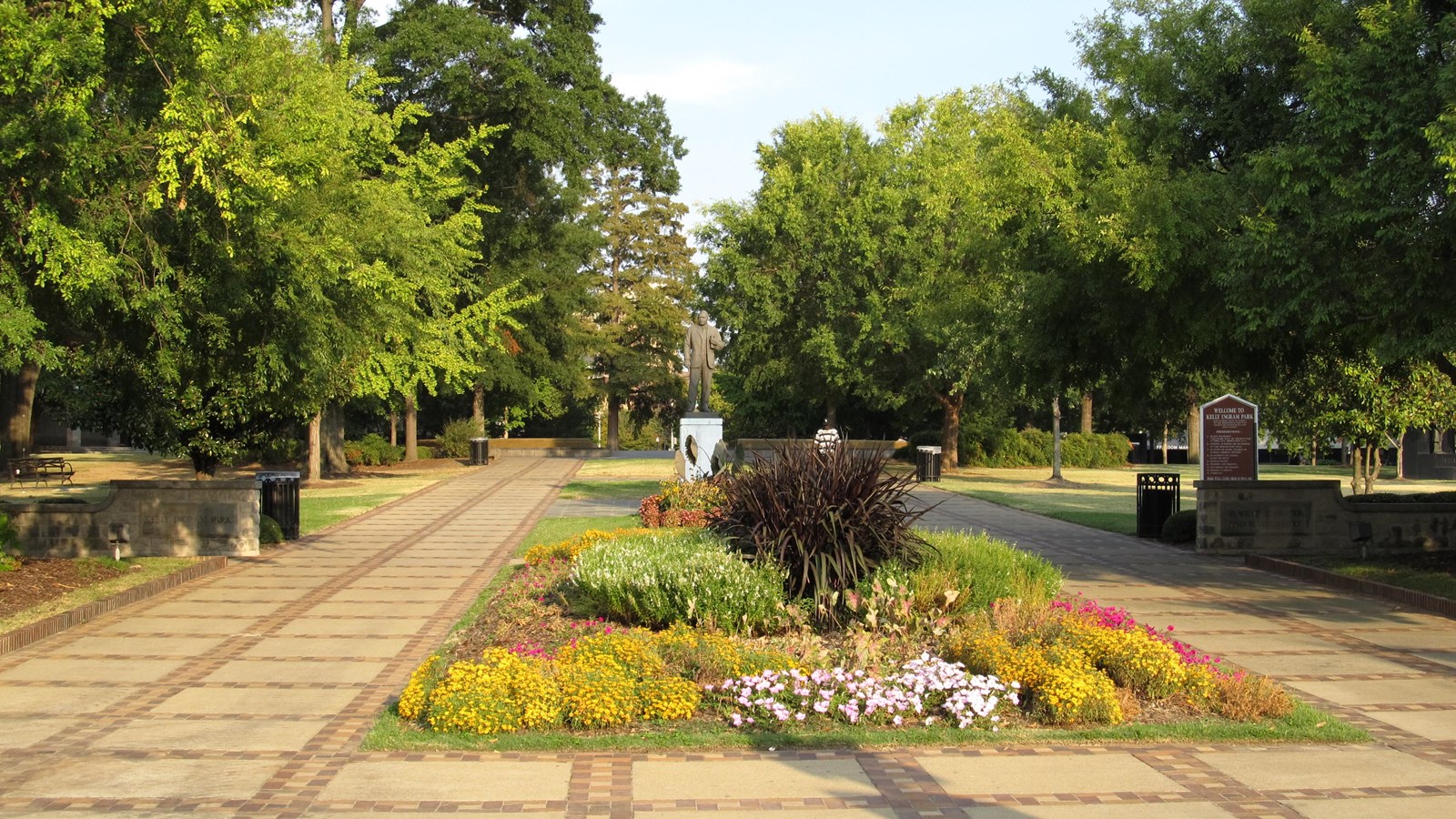Last updated: June 24, 2021
Place
Kelly Ingram Park

Photo by Ken Lund, Flickr, CC BY-SA 2.0, https://commons.wikimedia.org/w/index.php?curid=85795448
Accessible Sites, Cellular Signal, Information, Parking - Auto, Picnic Shelter/Pavilion, Scenic View/Photo Spot, Trash/Litter Receptacles
During the first week of May 1963, Birmingham police and firemen attacked civil rights demonstrators, many of whom were children, in the streets bordering this park. The violence raised a nationwide public outcry, hastening integration in America's most segregated city.
Birmingham, site of the first mass beatings of Freedom Riders, was selected by the Southern Christian Leadership Conference (SCLC) for a massive protest campaign. Kelly Ingram Park (historically known as West Park), was an assembly point for participants in the SCLC's Project "C," (for Confrontation)--sit-ins, boycotts, marches, and jailings designed to end segregation in Birmingham. Under the on site direction of SCLC President Martin Luther King, Jr., and local SCLC affiliate Rev. Fred Shuttlesworth, department stores were targeted for boycotts and protest marches organized. Dr. King was arrested and held in solitary confinement for three days, during which he wrote, smuggled out of jail, and had printed his "Letter from Birmingham Jail," a profoundly moving justification for the moral necessity of non-violent resistance to unjust laws.
When police filled the jails with mass arrests and depleted the ranks of adult demonstrators, the SCLC called on the city's children to join the protests. On May 2, under orders from Public Safety Commissioner Bull Connor, police arrested 600 child picketers (some as young as six years of age); by the next day, 1,000 children had been jailed. In the days that followed, firemen blasted the protestors, including children, with high-pressure fire hoses, and police used their nightsticks indiscriminately. Police K-9 units loosed their dogs into crowds of peaceful demonstrators, pinning down one woman and severely wounding three teenagers. One young bystander was whirled around by a policeman into the jaws of his German Shepherd. An Associated Press photographer standing nearby captured the incident, which quickly became the symbol of the unrest in Birmingham.
Fearful of a race riot and worried about lost business, local businesses made a "pact" with the SCLC, but Alabama's Governor Wallace disavowed any settlement and Bull Connor urged whites to boycott the stores involved. To prevent any violence that would undermine the agreement, President Kennedy ordered 3,000 Army troops to the outskirts of the city. Local merchants removed their "whites only" signs and desegregated their lunch counters. The newly-elected mayor repealed the city's Jim Crow laws and eventually desegregated the library, city golf courses, public buildings, and finally the schools.
Visit the National Park Service We Shall Overcome travel itinerary to learn more about the civil rights movement themes and histories. Also, be sure to check out Civil Rights subject site.
